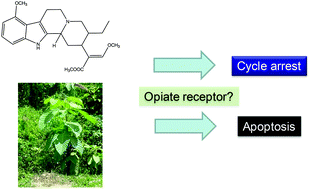The cellular toxicology of mitragynine, the dominant alkaloid of the narcotic-like herb, Mitragyna speciosa Korth
Abstract
Mitragyna speciosa Korth (Kratom), a herb of the Rubiaceae family is indigenous to southeast Asia. The plant and its dominant alkaloid mitragynine (MIT) are narcotic/analgesic and illicit consumption is widespread in Asia; the toxicological consequences of consumption are poorly documented. We determined cytotoxicity of MIT on human cell lines and report dose and time-dependent stimulation and inhibition of proliferation. Since MIT has powerful opiate-like activity, we focussed on human neuronal SH-SY5Y cell line and found the colony forming ability of cells treated with MIT showed a dose-dependent trend for reduced survival. Studies using metabolically competent MCL-5 cells and chemical inhibitors indicated that CYP 2E1 and 2A6 were involved in the cytotoxicity. Cytotoxicity was preceded by cell cycle arrest mainly at G1 and S phase. To assess whether arrest was due to DNA damage or mutation, we examined genotoxic potential using the L5178 TK+/− mouse lymphoma assay and found that MIT was not genotoxic at the TK locus, even at doses that were highly cytotoxic. To investigate mechanisms of MIT cytotoxicity, we used flow cytometry and annexin V with 7-amino-actinomycin D staining and show apoptosis and necrotic activity. Apoptosis was further supported as MIT rapidly induced the activity of executioner caspases 3/7. However, cytotoxicity of MIT was partially reduced by inclusion of the opioid receptor antagonist naloxone, a μ and δ opioid receptor antagonist, suggesting that cytotoxicity depends in part on opioid signalling, consistent with the known toxicity of other opiates. Based on consumption of 20 leaves per day of Mitragyna speciosa, we estimated daily human exposure to MIT to be about 17 mg MIT for regular consumers, potentially giving plasma concentrations in of 10−9 to 10−7 M. Importantly, fatalities after kratom consumption have been reported to occur in individuals with blood mitragynine concentrations of between 0.45–1.0 μM, substantially lower than the threshold of toxicity predicted from this in vitro report. Clearly the implications of these findings to humans consuming Mitragyna speciosa leaves will require further study, but individuals taking large quantities of these opiate-like materials may be at risk, especially those who have a high CYP2E1 activity, such as heavy alcohol users.


 Please wait while we load your content...
Please wait while we load your content...